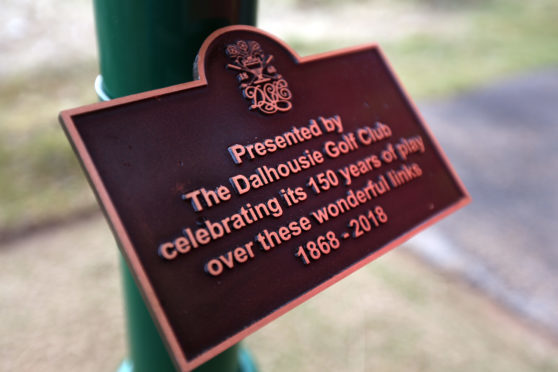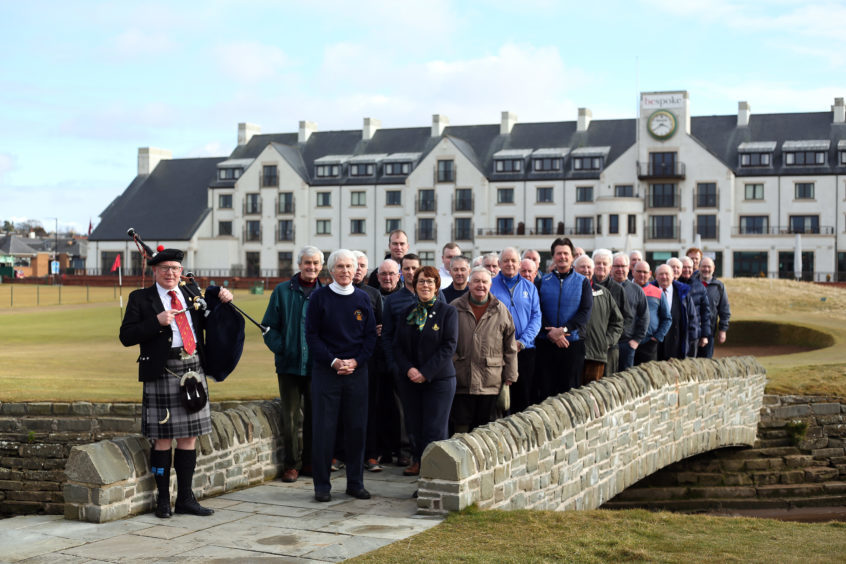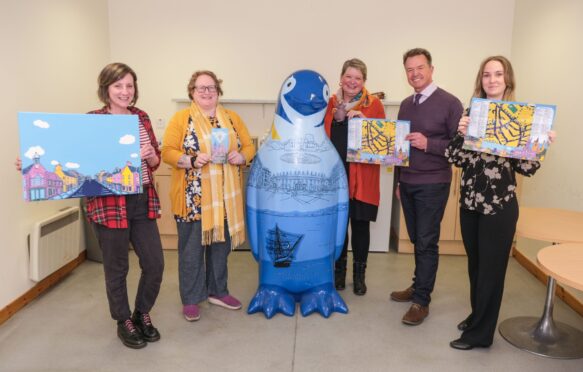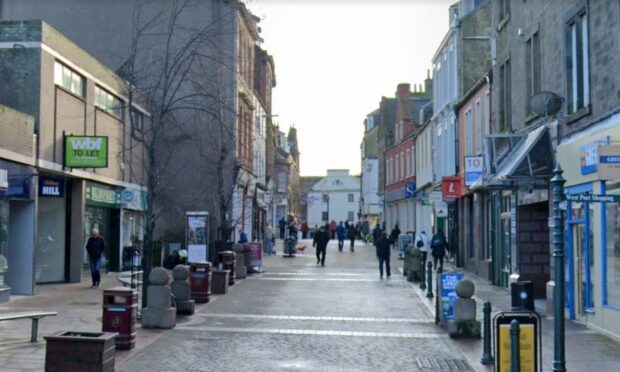The curtain has fallen on a six-month series of events to celebrate Dalhousie Golf Club’s 150th anniversary.
The club was fundamental in the organisation of golf across the links and Friday’s event started with 120 members and guests competing in a tournament on the Championship Course.
A putting competition followed, before guests were offered a tour of the Dalhousie Suite at Carnoustie Golf Hotel to see memorabilia and find out more about the club’s story since the inaugural meeting of the 20 original members who formed the club back in 1868.
A formal dinner took place on Friday evening with 130 guests including members from Secession in South Carolina, Brookline in Massachusetts, Royal Dublin and almost a score of clubs from England.
Speakers at the dinner were Professor David Purdie who has written humorous books on golf and academia and former criminal defence lawyer Bill Copeland who is much-sought after on the circuit .
Captain Donald Ford said: “This was the main event of the entire year and has been in the planning since 2013.
“It brings the curtain down on what has been a fantastic 150th anniversary for the club.
“The milestone coinciding with what was a memorable 2018 Open was even more special and everyone is still talking about Francesco Molinari’s maiden victory.
“We had representatives from more than 50 clubs at the dinner including local members and Lady Associate members from Dalhousie Golf Club.
“It’s the perfect way to end six months that we will never forget.”
Dalhousie Golf Club’s celebrations started back in March when the club’s legacy was etched into the very fabric of Carnoustie’s Championship course.
An engraved water feature was installed on the 16th tee.
There was also a race night and the publication of a book on the club’s history which was also given to Tiger Woods at this year’s Open.
The courses at Carnoustie are laid out on land largely acquired from the Earls of Panmure and Dalhousie and, in lesser measure, from Carnoustie House Estate.
As membership of the new club grew rapidly in the early months of 1868, the promoters wrote to Lord Dalhousie for permission to play golf on Carnoustie Links and choose an adjacent site for the clubhouse.
From the date of Lord Dalhousie’s approval to the present day, successive Earls of Dalhousie have held the title of Patron of the Club.
The present Lord Dalhousie – who is the present holder of the title – was also in attendance during Friday’s celebrations and presented the prizes for the golf tournament held earlier in the day.
Despite being a small club, Dalhousie’s history is exceptional.
It led the way in greenkeeping and clubmaking and golf in the town hugely benefited because of that.
The club was a founder sponsor of The Amateur Championship and in 1930, James Wright, the then-Chairman of Carnoustie Links, proposed further changes to Carnoustie’s four closing holes – which is now recognised as the hardest finish in Open golf.
Key dates in Dalhousie’s illustrious history
1868 – The inaugural membership advises the local clubs and golfers that Dalhousie would take charge of the maintenance of the links. The first clubhouse is also built – at a cost of £600.
1872 – Old Tom Morris is invited to inspect the course and agrees to convert it from 10 holes to the first 18 hole course in the town – the first major step towards the formation of the present Championship Course.
1883 – Dalhousie Council appoints Robert Simpson, from Earlsferry, as clubmaker and greens superintendent. Robert was accompanied to Carnoustie by two of his brothers, Archie and Jack, and the three were soon making the name of the town stand out in competitive golf. They inspired scores of locals to imitate “the Carnoustie swing” which was to be exported to many parts of the world as they headed off to America, South Africa and Australia to teach golf as professionals – securing Carnoustie’s vital pioneering role in world-wide golf.
1886 – Dalhousie gets together with another 25 clubs from across the UK and founds the British Amateur Championship, which is still going strong today.
1926 – James Wright, the then Captain of the Dalhousie Club, persuades the local golfing community that James Braid should be invited to examine and advise on the upgrading of the Championship Course – a vital point in Carnoustie’s development as one of the greatest courses in the world.
1930 – Following criticism by competitors at the Scottish Amateur Championship that the finish was “too easy”, Wright himself proposes further changes, which made Carnoustie’s four closing holes among the toughest and most respected anywhere. It was timed to perfection, as the first Carnoustie Open Championship took place in 1931 – and was won by Edinburgh-born US citizen Tommy Armour.











